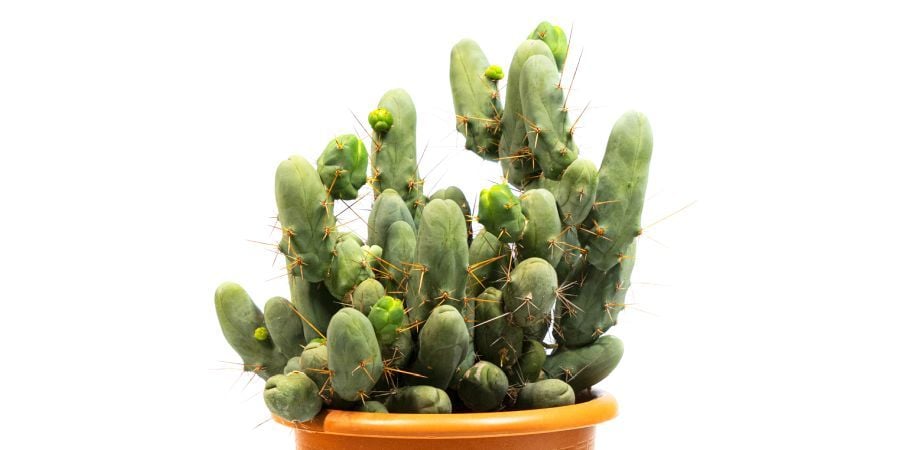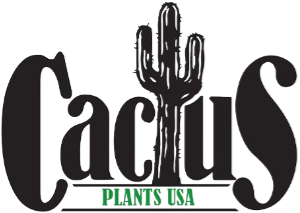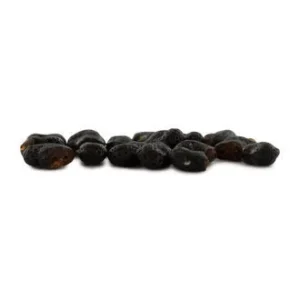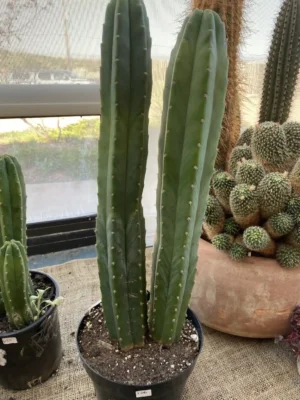BOLIVIAN TORCH ‘MONSTROSE’ (PENIS PLANT)
Since antiquity, humans have valued hallucinogenic cacti as ceremonial sacraments. Modern psychonauts also seek out spiked vegetation for its entheogenic properties. The most well-known variants include San Pedro and Bolivian Torch‘monstrose’ (Penis Plant), although Bolivian Torch is also high in the active ingredient mescaline (that’s 3,4,5-trimethoxyphenethylamine for the chemical geeks).
What is Bolivian Torch’monstrose’ (Penis Plant)?
The Bolivian torch, also known by the Latin name Echinopsis lageniformis (previously Trichocereus bridgesii), is a fast-growing plant endemic to Bolivia’s high deserts. Several psychotropic compounds are found in the plant, including the serotonergic alkaloid mescaline. Mescaline levels in dried samples were found to be 0.56%. However, some strains contain much larger amounts.
The Bolivian Torch ‘monstrose’ (Penis Plant) torch grows in a columnar pattern in nature. Cactus growers and collectors have domesticated the species and created various cultivars, including Trichocereus bridgesii monstrose (TBM). Botanists use the word “monstrose” in a name to indicate an unusual or twisted shape. This cultivar’s two cuttings, Clone A and Clone B, are widely cultivated variations.
Both of these clones have been given the appellation “penis plant” as well as the ever-so-subtle moniker “the pornographic cactus”. Cultivators gave the plant these names because of its remarkable similarity to different sections of the human body. We’re not joking. Some specimens have an obvious urinary meatus (the hole at the end).
Cactus Plants USA offers cuttings from Clone A and Clone B specimens.
CLONE A: TRAITS AND GROWING CONDITIONS
Our Clone A cuttings range in length from 25 to 30cm. This cultivar grows in a clustered pattern and reaches a height of 40cm. The stem is smooth and grayish-green, with areoles (bump-like “branches”) and spines predominantly around the base. The needles are light brown in color and grow to be 7cm long.
Clone A blossom appears in a unique way. Cactus buds normally emerge from the areoles. However, in this situation, they are visible through the skin.
Clone A, like Echinopsis lageniformis, is simple to cultivate. This hardy cultivar thrives in temperatures as low as -12°C. Cuttings flourish in rich, well-drained soil. Clone A, unlike other cactus, has a high water requirement. Keep an eye on her to make sure she doesn’t dry out. Fertilize your cactus once a month to meet its nutritional requirements.
Outdoor plants thrive in full light, but during extreme heat, shift them to shade. Indoor plants need direct sunshine on occasion and thrive on windowsills. This cultivar needs a winter dormancy time to relax and recover. During this time, stop watering and feeding.
CLONE B: TRAITS AND GROWING CONDITIONS
Clone B deserves the moniker “penis plant” more. This taller, thicker, and spineless variety grows to a height of 60cm. Our Clone B cuttings range in length from 7 to 12cm but may vary in size owing to the plant’s unusual form. They will, however, be significant enough to develop.

Clone B cuttings develop in clusters as well. This cultivar grows slowly, but fans like it for its unusual—and hilarious—shape. The top of the stem is smooth, spineless, and devoid of areoles. The bottom parts form ribs and include a few spines.
This cultivar is just as tough as Clone A. It has comparable water and nutritional requirements and must rest throughout the winter. Outdoor plants thrive in full light but cannot withstand very hot summers. Indoor plants that get intermittent sunshine should be placed in a sunroom or conservatory or on a windowsill.
Both Clone A and Clone B are said to exhibit mescaline levels comparable to Echinopsis lageniformis.








Reviews
There are no reviews yet.